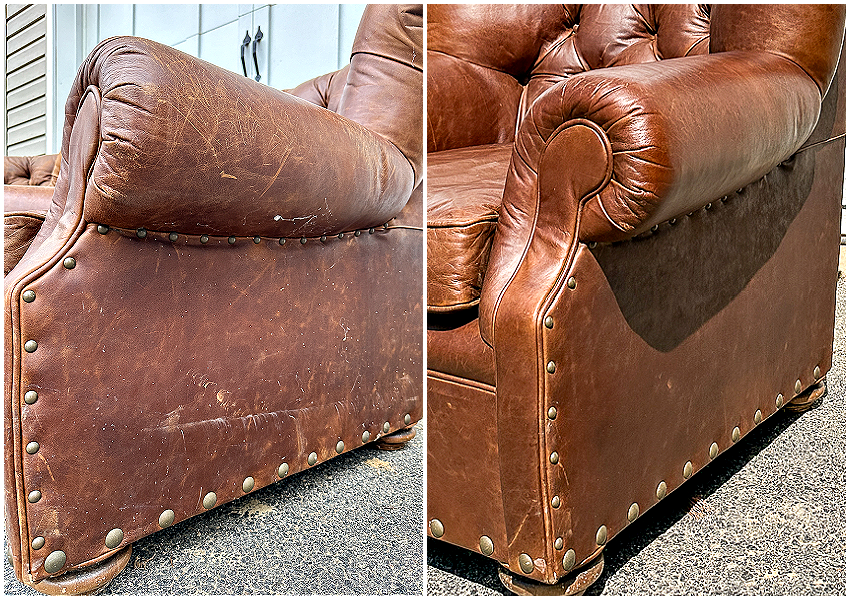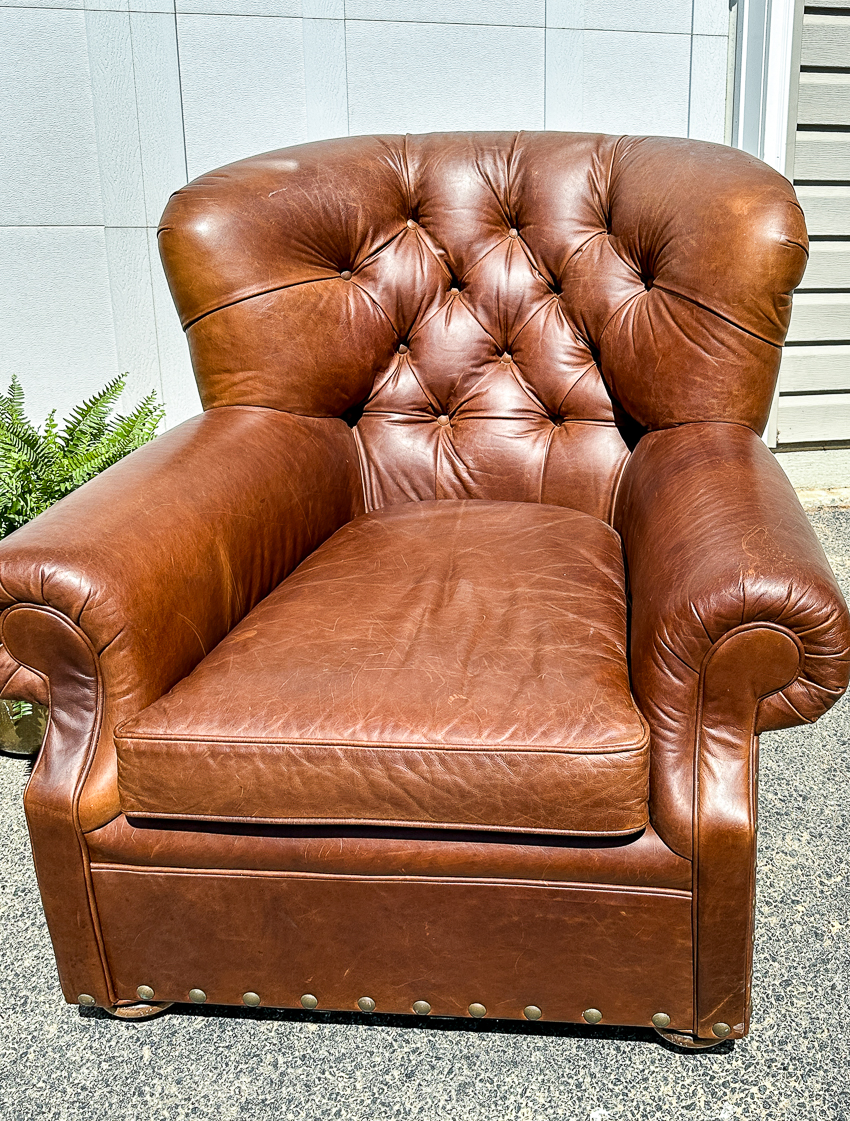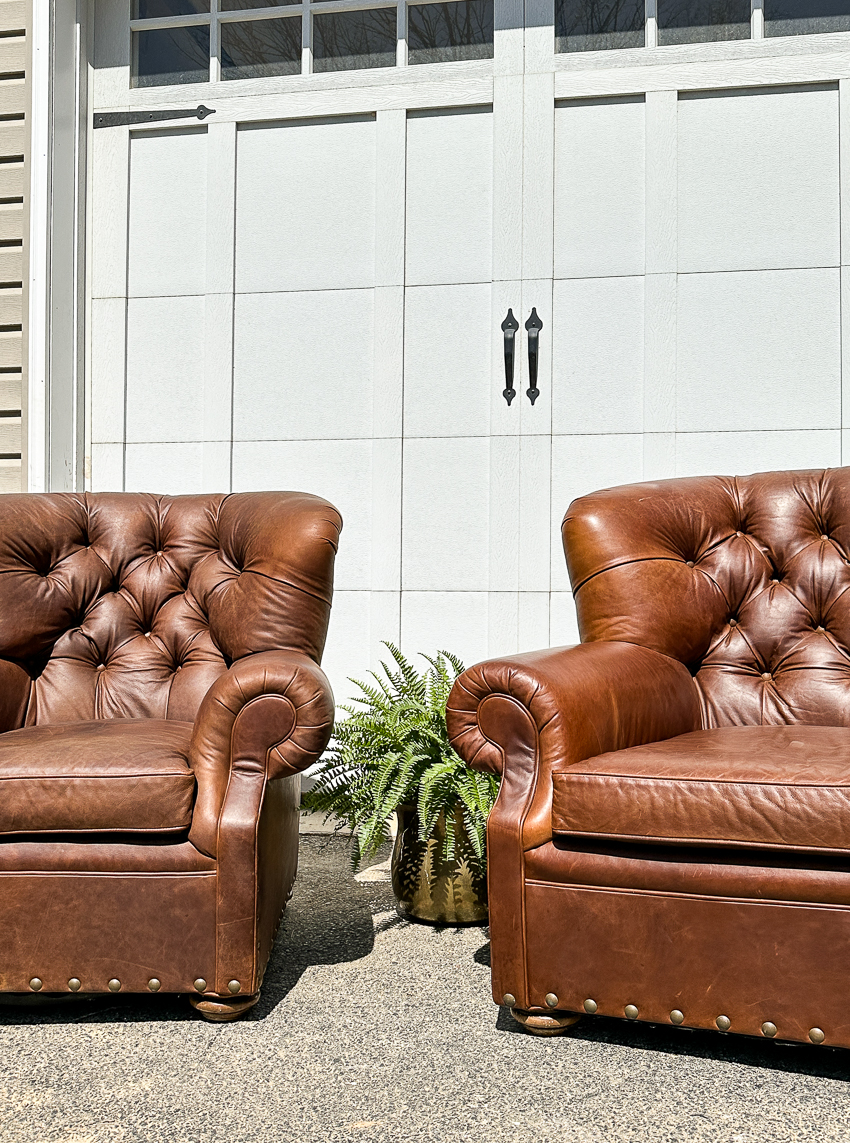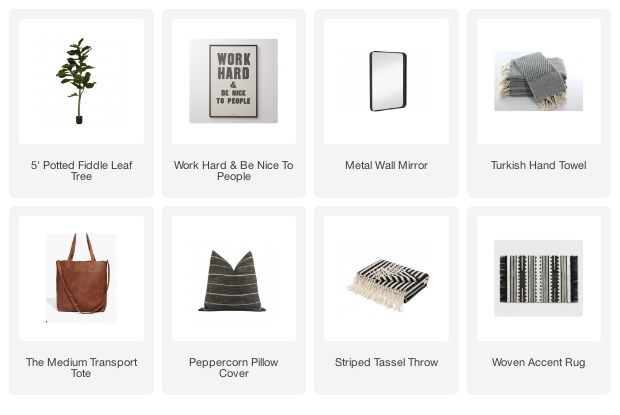Learn how to beautifully clean, condition, and restore old, dry, and damaged leather furniture!
Last week, I drove out of state to pick up a pair of leather Restoration Hardware Churchill chairs.
It was a long drive and as I tend to do, I bought them solely based on a few online pictures.
Thankfully, the chairs were in wonderful worn vintage condition, but in desperate need of a little cleaning and conditioning.
I did a little research and found the perfect leather conditioner that was affordable, easy to use, and instantly revived the chairs back to life!
SUPPLIES NEEDED TO RESTORE LEATHER FURNITURE
- Leather CPR 2-in-1 Leather Cleaner and Conditioner (free from harsh chemicals!)
- Sponge
- Cotton rag
- Protective gloves (optional)
I held my breath as I stepped out of my truck and into the auction house. My biggest fear buying something sight unseen is that it smells. You know the smells I'm talking about. The ones that are nearly impossible to eliminate and instantly ruin a good piece of furniture, cigarette smoke, a musty old basement, and cat urine.
I'm not going to lie, the first thing I did when I got to the chairs was give them a good sniff.
I was instantly reassured that I made a good purchase when they passed the smell test. They needed a little TLC, but at least they were free of rips, tears, or rank smells.
Both chairs showed signs of wear common for their age, were dotted with random white specks, which I suspected to be paint, and one chair had quite a few more dark stains than the other. Thankfully, neither chair had any major cracks, rips, or tears.
I researched a few leather cleaners and conditioners and settled on Leather CPR. I wanted an affordable product that didn't require many steps and wasn't a colored paste or cream.
My goal was to clean and condition the chairs and reduce the appearance of scratches and scuffs without changing the color of the original leather.
STEPS TO CLEAN AND CONDITION LEATHER FURNITURE
1. Apply a generous amount of Leather CPR to a small furniture section. Work the product into the leather using a sponge. Do not use a cloth as it will soak up too much of the product.
2. Let Leather CPR sit for a minute or two to loosen the dirt then wipe off the residue with a sponge. Apply additional product at this time if needed.
TIP: Rinse and clean the sponge often to reduce rubbing dirt and grim back into furniture.
3. Remove any access product and buff using a clean cotton cloth. Pay close attention to wiping between leather folds and along seams.
4. Repeat steps for stubborn or extra dry areas.
The CPR leather cleaner did an incredible job rejuvenating, conditioning, and adding moisture back into the leather chairs while keeping the charm of the aged leather. It blended away light scratches and dried quickly with no sticky or greasy residue.
I was also pleasantly surprised that it effortlessly removed the white specks, which I originally thought was paint!
The chairs aren't perfect, but for $25 and an hour of my time, the product is 100% worth buying.
Now that the leather chairs are cleaned and conditioned it's important to keep them looking good.
HOW TO CARE FOR LEATHER FURNITURE
1. Avoid placing furniture near heat sources and in direct sunlight for prolonged periods.
2. Condition every six months with a leather cleaner and conditioner.
3. Dust and clean regularly.
4. Wipe up spills immediately with a clean damp cloth.
These now beautifully cleaned and restored Restoration Hardware chairs are ready to head to the Lucketts Spring Market in May!

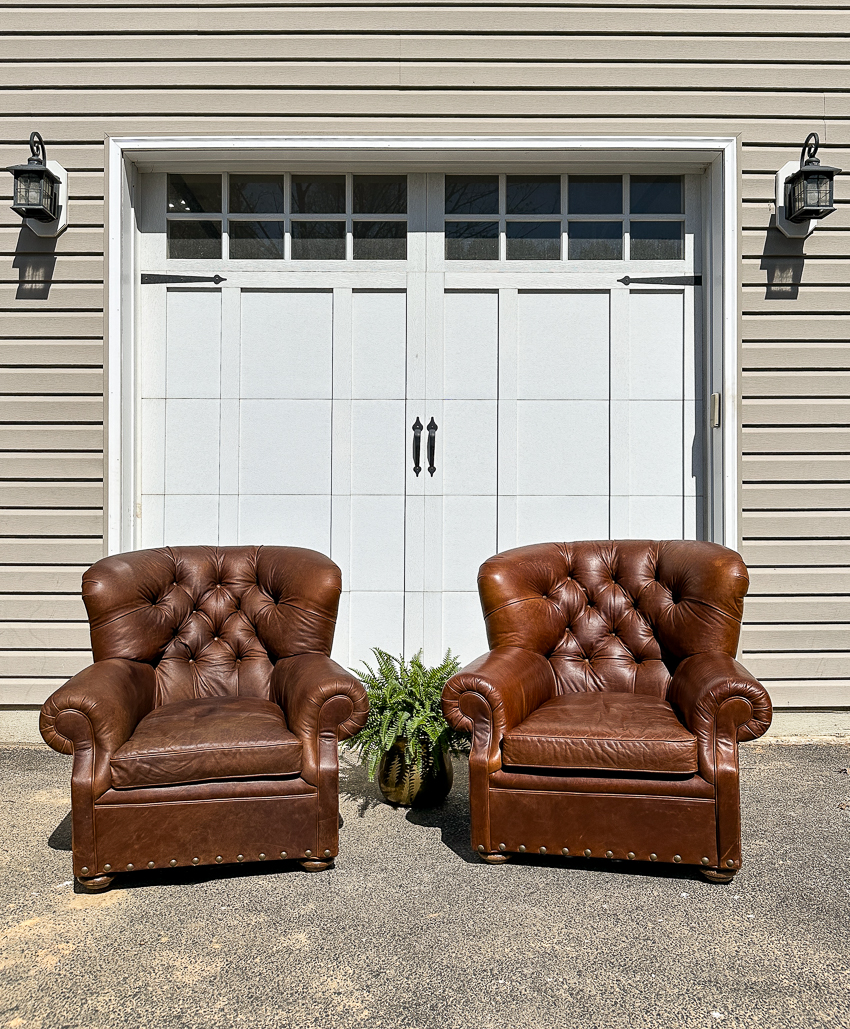
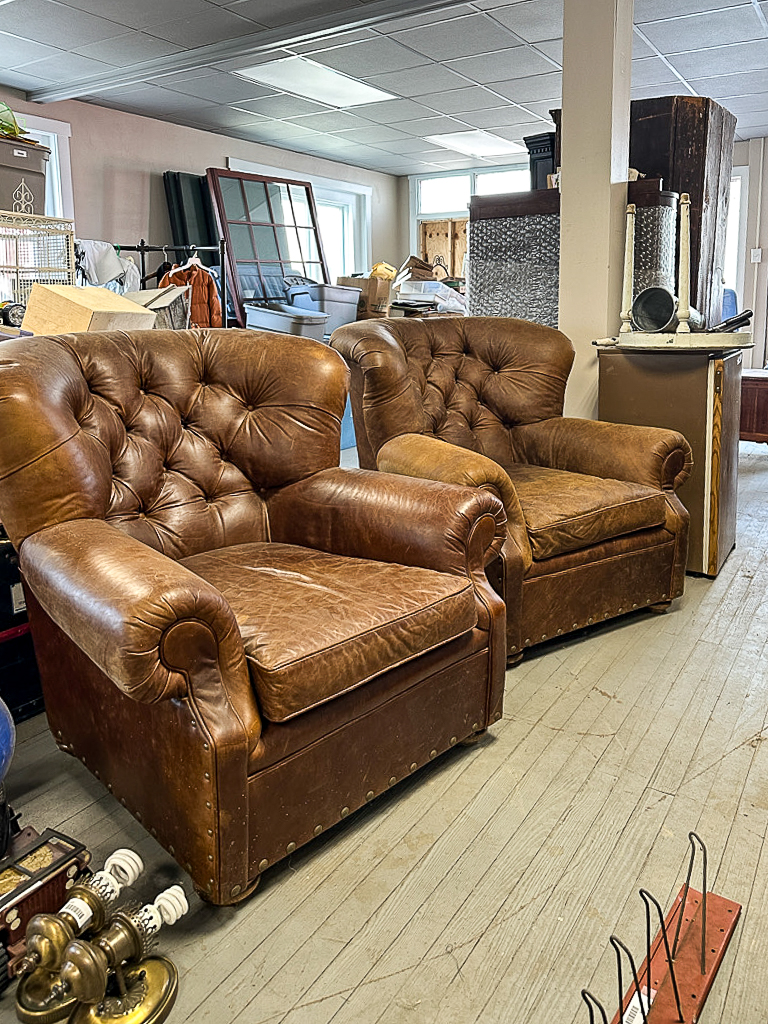





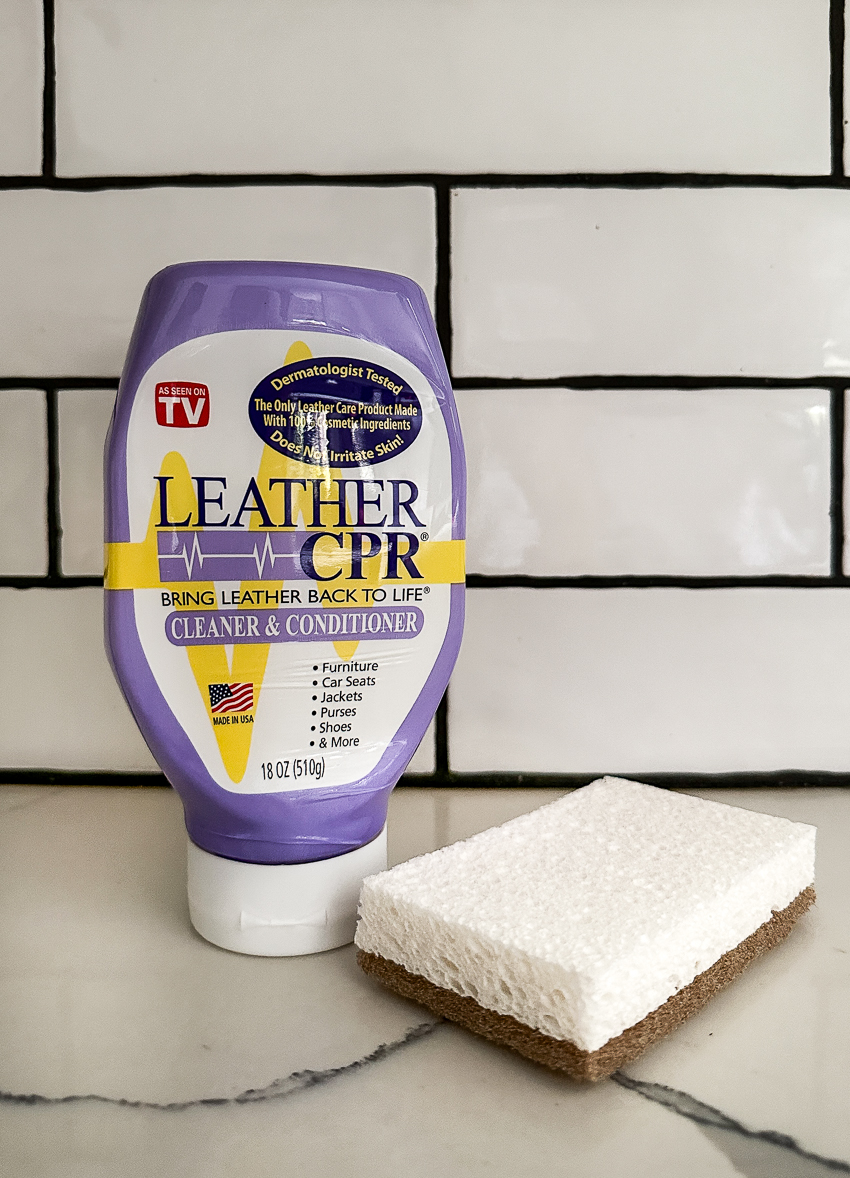


.png)
